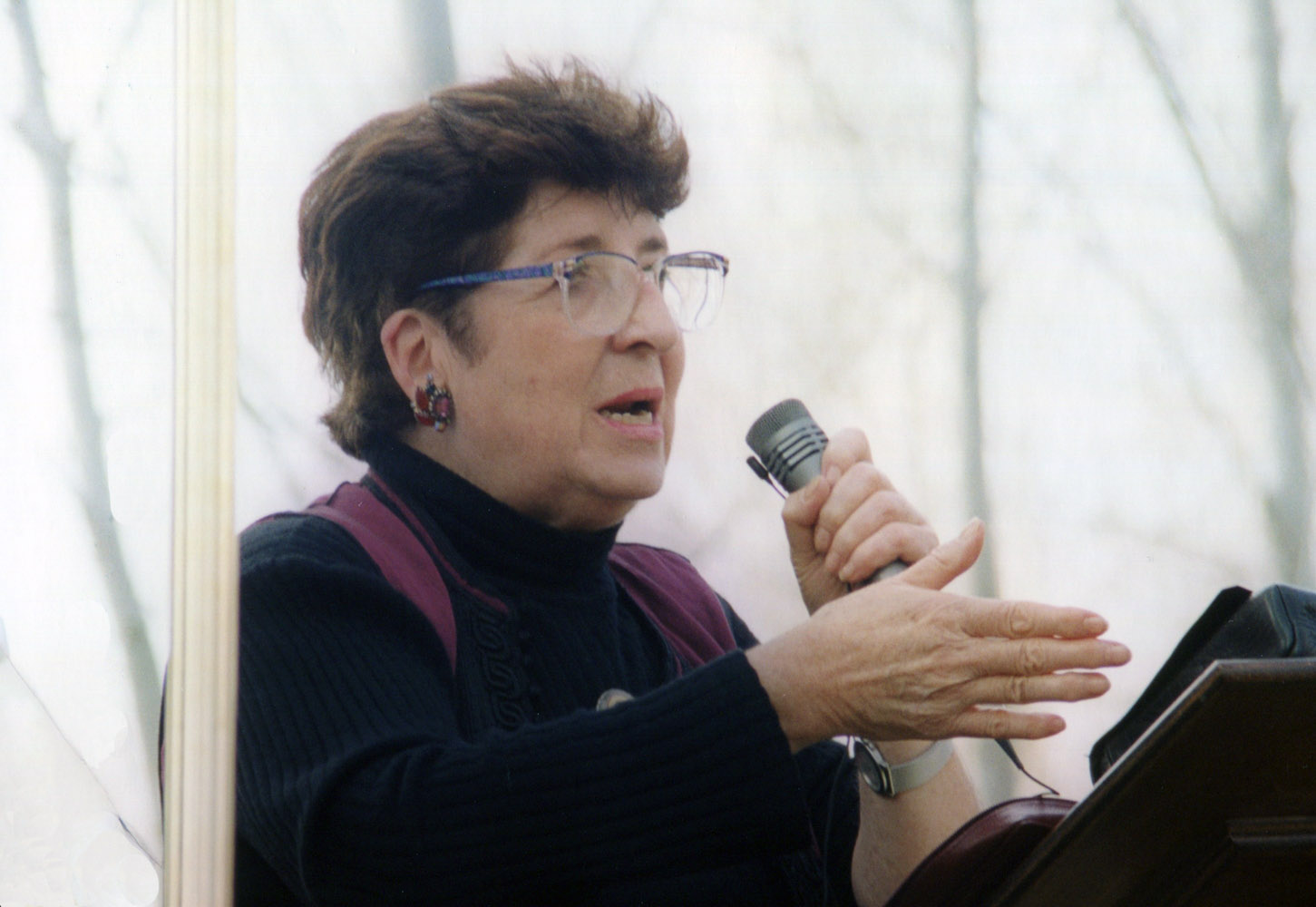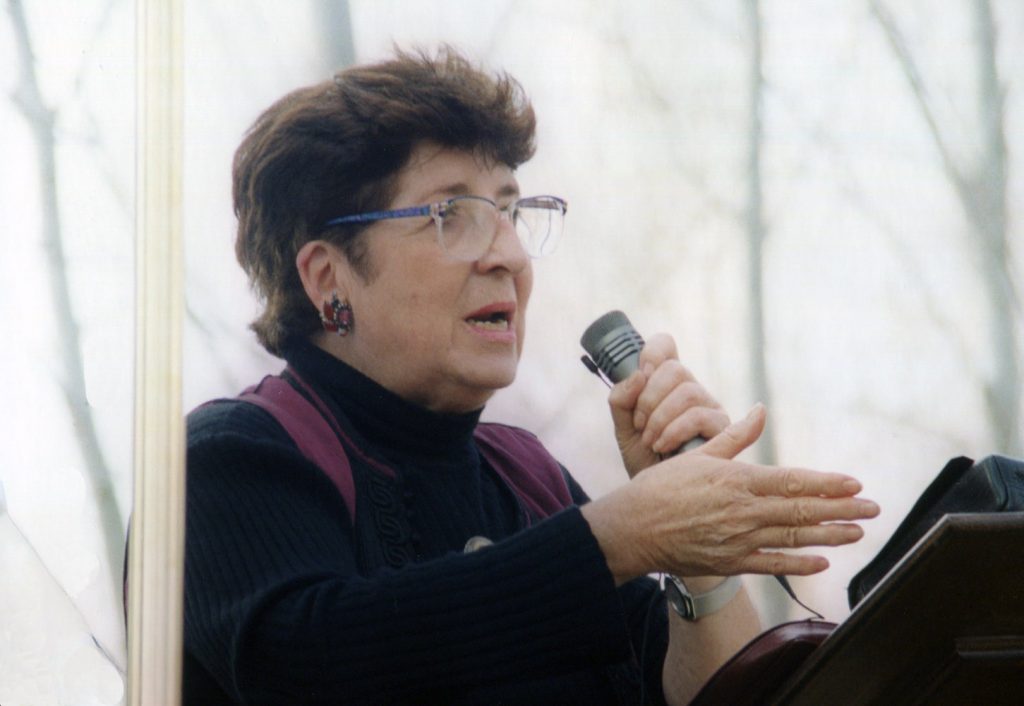ÓLVEGA
Carmen was born in Ólvega (Soria) on November 24, 1930. She spent her childhood in Tudela (Navarra). From childhood, she felt a missionary vocation under the influence of the spirit of St. Francis Xavier. She studied chemistry at the University of Madrid. She confirmed her missionary vocation in Javier (Navarra), at the “Institute of Missionaries of Christ Jesus,” and studied religious sciences in Valencia. In 1964, she met Kiko Argüello in the slums of Palomeras Altas in Madrid and, after her experience of proclaiming the Gospel to the poor, they began the Neocatechumenal Way, giving their lives to this mission for more than 50 years throughout the world. She had an immense love for Jesus Christ, the Church, the Virgin Mary, the Pope, the Liturgy, Sacred Scripture, and the Hebrew roots of Christianity. She died in Madrid on July 19, 2016.
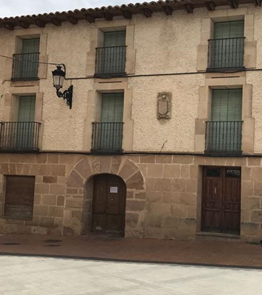
Carmen was born into a large family, the fifth of nine siblings. Her parents, Antonio and Clementa, moved from Ólvega to Tudela. Her mother would return to Ólvega to give birth to her children, who were born in the village alongside their grandparents.
Four days after her birth, Carmen was baptized in the parish church of Santa María la Mayor in Ólvega. The old wooden baptismal font where Carmen Hernández was baptized is on display in the church. This Gothic church dates from the late 15th and early 16th centuries. The high altarpiece from the late 16th century, by the sculptor Francisco de Ágreda, is particularly noteworthy. The entire altarpiece is a close-up of the History of the Salvation of Man, depicting the four evangelists, the four holy Fathers of the Latin Church, scenes from the life of the Virgin Mary, mysteries of the life of Jesus, scenes from the sacrifice of Isaac, all culminating in the crucifixion of Jesus.
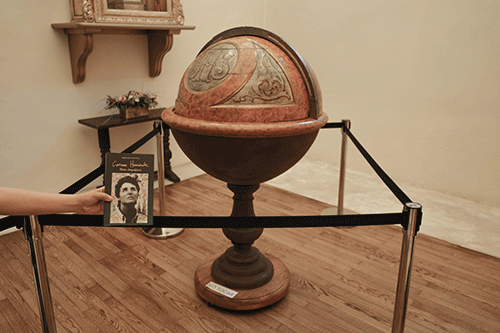
TUDELA
Carmen spent her childhood and adolescence, until the age of 15, in Tudela, a city on the banks of the Ebro River in Navarre, with rich lands and the famous Tudela vegetable gardens. It is part of the Way of St. James, which welcomes pilgrims from the Mediterranean who follow the course of the Ebro River until they reach the French Way. At that time, Tudela was part of the diocese of Tarazona. In the 1940s, it had a large number of religious orders, both male and female. The two private schools that existed were mainly the Compañía de María for girls, where Carmen studied, and the Compañía de Jesús for boys.
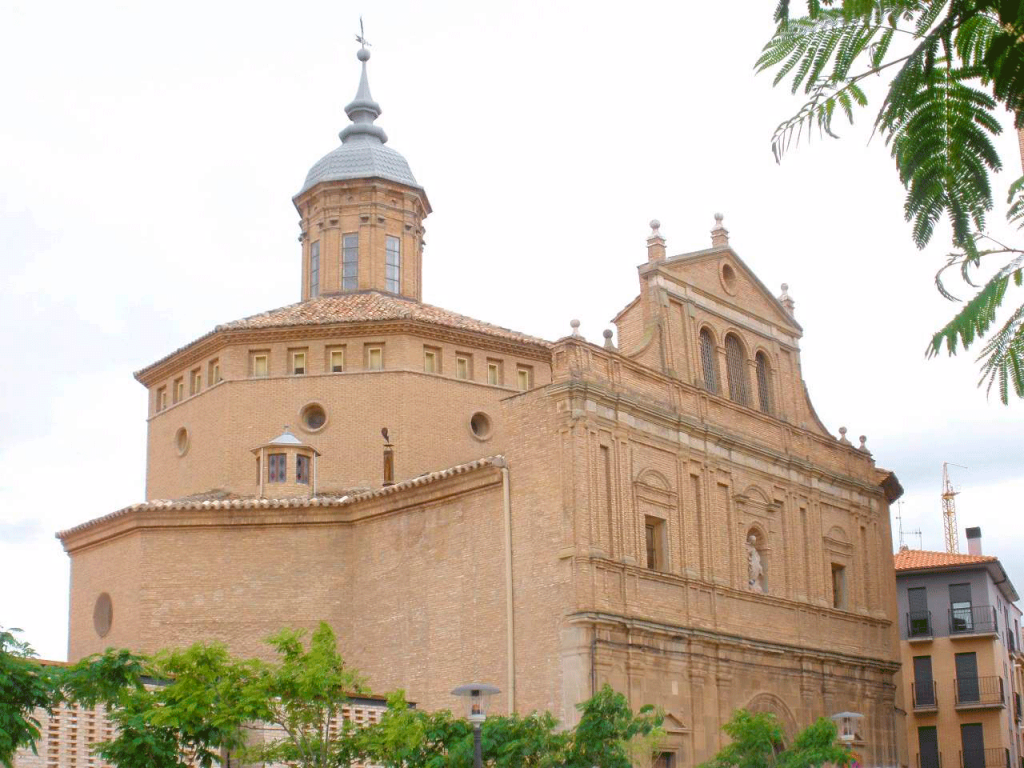
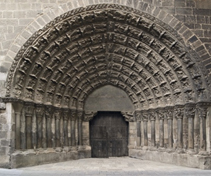
The Jesuits, missionaries in many countries around the world, used to visit the nearby school of the Company of Mary when they passed through Tudela, and they would inspire the girls with their missionary stories accompanied by slides. From these encounters, Carmen’s missionary calling was born, which began when she was a child. On her way to school, she used to cross the Cathedral of Santa María to visit the Blessed Sacrament. This church was halfway between her home and the school; she would enter through one door and leave through the other. She prayed daily in the Chapel of the Holy Spirit, kneeling before the Blessed Sacrament. She herself says that it was in this chapel that she felt the call to the mission, hearing the Gospel of the miraculous catch of fish for the first time in Spanish and spending hours in adoration of Jesus in the Blessed Sacrament.
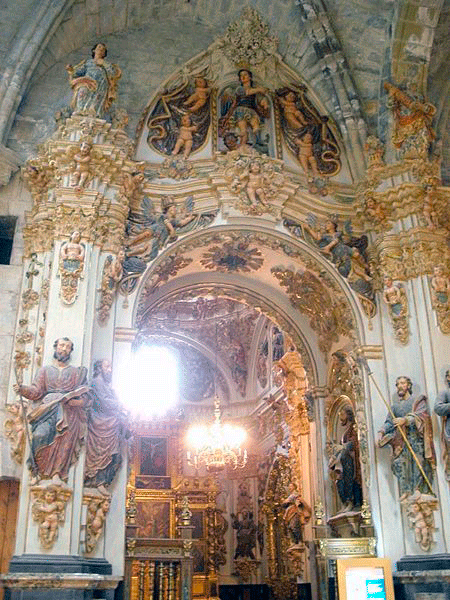
After primary school, she attended elementary high school until she was 14, where she became very familiar with the spirituality of St. Ignatius of Loyola and became passionate about St. Francis Xavier. She used to say, “I knew St. Francis Xavier before I knew St. Paul.” Thus, Francis Xavier and India became her missionary ideal. Evangelization was for her the very life of the Church, the “new garment” that would clothe her for the rest of her life with a profound love for Christ and for the mission.
In 1945, the family moved to Madrid. There, he continued his studies at his father’s request until she completed her degree in chemistry at the age of 21. She began working mainly in the family oil business in Andújar. She would later leave everything behind and move to Javier.
JAVIER
Javier is a small town 55 km east of Pamplona. It is the birthplace of Saint Francis Xavier, born in 1506 in the castle of the same name and patron saint of missions. While studying in Paris, he joined the group that Saint Ignatius of Loyola had gathered for his project to found the Jesuits. Ordained a priest in Rome in 1541, he left for the East, tirelessly evangelizing India and Japan for 10 years, converting many to the faith. He died on December 3, 1552, on the island of Sanchón, at the gates of China, without achieving his dream of evangelizing that country. He was canonized on March 12, 1622. He is the co-patron saint of Navarre, along with Saint Fermin.
God led Carmen to Javier in a mysterious way, according to her own account. She tried several times to become a missionary, but her father would not allow it. When she came of age, she traveled to Pamplona, and from there to Javier, without her father being able to stop her. She said that she made the trip by train with some young men who, as they talked about their lives, were very surprised when she told them that she was traveling to Javier to become a missionary. Her manner and way of speaking made them skeptical: “You, a nun?”
There she entered the Institute of Missionaries of Christ Jesus, which had been founded in 1944 with the support of Bishop Marcelino Olaechea and the inspiration of the Jesuit missionary Father Domenzáin. The latter saw the value of bringing the excellent ecclesial work carried out here by a group of women from Catholic Action to his mission in Japan. These were young women with a clear vocation to help the missionaries. This vocation was like a flash of lightning. A new, more agile and effective missionary style was born: “free women for the mission wherever the Church needed them.” She remembers this time with gratitude to the Lord and as a cenacle of prayer and immense grace, of consolation and discovery of the Scriptures, with a truly powerful spirit.
Carmen entered the Community of the Missionaries of Christ Jesus on April 1, 1954. As her companion Sister Loli Gómez recounts, she was highly regarded for her inner dynamism, her warmth, her closeness, and her good humor. After six months as a postulant, on October 3, the feast day of St. Thérèse of the Child Jesus according to the old calendar, she entered the novitiate and took the habit in the Basilica of St. James with the name María del Carmen de Jesús.

In addition to the usual three vows of poverty, chastity, and obedience, they professed a fourth vow of consecration to the missions, which fascinated Carmen because it responded to her ardent missionary vocation. It was the time of the novitiate, a time of humility and simplicity, of preparation to be useful in the mission, with studies in missiology, religion, nursing, medicine, or foreign languages, and many hours of work and prayer. They prayed all the holy hours, the Little Office, the Rosary, and prayer before the Blessed Sacrament. Those were days when Carmen lived under strict discipline, a time of sacrifice, humility, joy, and courtship with Jesus Christ. It was an intense and rich courtship with Jesus, which had its special moment of grace on the night of September 6-7, 1956. Before taking their vows, they had a whole month of spiritual exercises. And in the third week dedicated to the Passion, she was very impressed by St. Peter’s denials of Jesus Christ. She spent the whole night thinking that if St. Peter, instead of saying, “I will not deny you,” had asked the Lord, “Do not let me deny you,” he would have granted it to him. With that idea in mind, she went to bed and had a dream in which she saw Jesus Christ saying to her, “You, follow me!” And Carmen, seeing Jesus Christ, tried to follow him, but she saw that it was madness. And he said to her again, “You, follow me!” And she went out with Jesus Christ through the window and found herself in the void; and she began to descend at an ever-increasing speed, fearing with anguish that she would be crushed, and she heard the voice of Jesus Christ saying to her, “Didn’t you say you wanted to follow me?” Then she said, “Yes,” and she entered into death. At that very moment, she found herself rising in a glorious, wonderful ascent, with an incomparable feeling of pleasure and well-being. It was bliss, being in heaven behind the Lord, rising, until she said, “Enough, enough!” She woke up having tasted what the “bliss” of heaven truly was. She savoured this ascension for a whole month, experiencing a pleasure as if it would never end: it was heaven, the possession of God, Eternal Life. Carmen would say that she would never forget this dream because it made her aware of the Mystery of Easter: the kenosis and the resurrection, like a light that always accompanied her in the events of her life.
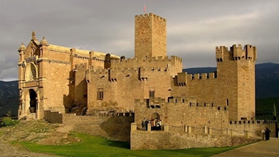
The castle of Javier is the birthplace of St Francis Xavier, universal patron of missions. He left home at 18 and never went back. Driven by the evangelizing zeal, he travelled all the Far east, India, Japan and other places, and found death at the border with China, in the island of Sancian. Carmen, in her passion for the mission, used to say “I knew St Francis Xavier before St. Paul”. Therefore St. Francis Xavier and India became her missionary ideal.
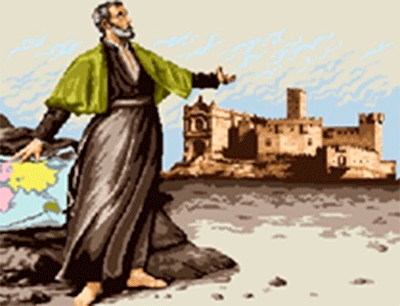
In this place Carmen joined the Missionary institute of the Missionaries of Christ Jesus, a foundation supported by Bishop Marcelino Olachea, and the Jesuit missionary Rev. Domenzáin, that was hosted in a building next to the castle. She entered in 1954 and began her novitiate. In this institute she stayed for 8 years, until the Lord showed her that his will for he life was another one. After a trip to the Holy Land in 1963-1964, coming back to Madrid, she began with Kiko Argüello what later became the Neocatechumenal Way, which the Church has officially recognized as an “Itinerary of catholic formation valid for the society and the times of today”.
THE SMILING CHRIST OF JAVIER CASTLE

In the chapel of Javier’s castle there is a Romanesque carving of Christ crucified, known as the “Smiling Christ,” with his head bowed over his right shoulder. A gentle, sweet smile plays on his lips. Carmen lived in a spirit of prayer. She was moved when she prayed before Javier’s Christ, located inside the castle, who smiles sweetly at the paintings of the dance of death, eight skeletons that have no power over him and are unaware of this Good News: There are paths in the Cross, death has been conquered in Jesus Christ!
After this experience, her two-year novitiate came to an end. On October 3, 1956, she professed her temporary vows in a ceremony officiated by Monsignor Olaechea. In the fall of 1957, she left for Valencia to pursue theological studies. Finally, after many events, she providentially traveled on pilgrimage to the Holy Land. There she discovered the spirituality of the History of Salvation. Later she found her service to the Church with Kiko Argüello, beginning together the Neocatechumenal Way.
ÁGREDA
Monastery of the Immaculate Conception
Conceptionist convent founded by Catalina Arana, mother of Sister María de Jesús (1602-1665), known as María de Ágreda. One of the greatest mystical writers of the Catholic Church (Mystical City of God), an eminent Mariologist who was three centuries ahead of her time in defining, among other things, the dogma of the Immaculate Conception of the Virgin Mary. Advisor to King Philip IV, with whom she maintained an extensive correspondence, advising him on his spiritual life and his duties as ruler. She also evangelized the American Indians of New Mexico and Texas without leaving Ágreda, thanks to the gift of bilocation. This 17th-century nun is still relevant today and has something to say, hence the interest in visiting her monasteries.
Carmen Hernández had known about this nun’s qualities since she was a child, and she often visited the monastery and its museum. But it was in Newark (USA), in conversation with a benefactor of the Redemptoris Mater seminary (1990), Mrs. Helen Sirola, that she learned about the evangelizing significance of Sister María de Jesús, the lady in blue, and rediscovered her figure and her virtues.
Basilica of Our Lady of Miracles
Temple built in the 16th century dedicated to the Virgin of Miracles, patron saint of Villa y Tierra, which houses the baptismal font where Sister María de Jesús was baptized and which is still in use today.
TARAZONA
Cathedral of Santa María de la Huerta
The seat of the Diocese of Tarazona brings together a variety of styles, from 13th- to 15th-century Gothic to 16th-century Renaissance, embellished with traditional Aragonese Mudejar architecture.
Until the new distribution of diocesan provinces in 1956, Ólvega, Tudela, and Ágreda belonged to the diocese of Tarazona, to which Carmen Hernández had a close connection because it was in this diocese where she received the sacraments of Christian initiation, and she reminded the bishops with whom she spoke of this.
The cathedral’s large capacity makes it suitable for hosting large groups.
